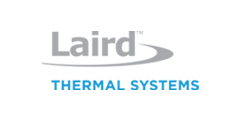Thermoelectric Coolers
2022-05-31
Solid state heat pumps have been in existence since the discovery of the Peltier effect in 1834. The devices became commercially available several decades ago with the development of advanced semiconductor thermocouple materials in combination with ceramics substrates. Thermoelectric coolers are solid-state heat pumps that require a heat exchanger to dissipate heat utilizing the Peltier Effect. During operation, DC current flows through the thermoelectric cooler to create heat transfer and a temperature differential across the ceramic substrates, causing one side of the thermoelectric cooler to be cold, while the other side is hot. A standard single-stage thermoelectric cooler can achieve temperature differentials of up to 70°C.
●Benefits of Using Thermoelectrics
■They have no moving parts, so the solid state construction results in high reliability and units can be mounted in any orientation.
■Thermoelectric coolers can cool devices down to well below ambient. Colder temperatures can be achieved, down to minus 100°C, by using a multistage thermoelectric cooler in a vacuum environment.
■Thermoelectrics are able to heat and cool by simply reversing the polarity, which changes the direction of heat transfer. This allows temperature control to be very precise, where up to ±0.01°C can be maintained under steady-state conditions.
■In heating mode, thermoelectric coolers are much more efficient than conventional resistant heaters because they generate heat from input power supplied plus additional heat generated by the heat pumping action.
■Devices are environmentally friendly because they use no CFC’s and electrical noise is minimal.
■Thermoelectric coolers can be used as energy harvesters, turning waste heat into usable output DC power.
●Benefits of Using Thermoelectrics
■They have no moving parts, so the solid state construction results in high reliability and units can be mounted in any orientation.
■Thermoelectric coolers can cool devices down to well below ambient. Colder temperatures can be achieved, down to minus 100°C, by using a multistage thermoelectric cooler in a vacuum environment.
■Thermoelectrics are able to heat and cool by simply reversing the polarity, which changes the direction of heat transfer. This allows temperature control to be very precise, where up to ±0.01°C can be maintained under steady-state conditions.
■In heating mode, thermoelectric coolers are much more efficient than conventional resistant heaters because they generate heat from input power supplied plus additional heat generated by the heat pumping action.
■Devices are environmentally friendly because they use no CFC’s and electrical noise is minimal.
■Thermoelectric coolers can be used as energy harvesters, turning waste heat into usable output DC power.
- +1 Like
- Add to Favorites
Recommend
All reproduced articles on this site are for the purpose of conveying more information and clearly indicate the source. If media or individuals who do not want to be reproduced can contact us, which will be deleted.


































































































































































































































































































































































































































































































































































































































































































































































































































































































































